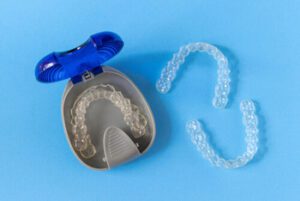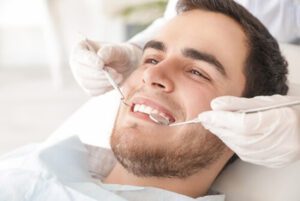Choosing between Invisalign and braces is a significant step towards achieving a straighter smile, but which one suits your lifestyle better? Both options are designed to align teeth effectively, yet they offer distinct experiences during treatment. Some prefer the reliability of traditional braces, while others enjoy the flexibility of clear aligners. Understanding the key differences will help you make a more informed choice. So, what makes Invisalign vs braces different, and which one aligns best with your goals?
The Role of Traditional Braces in Orthodontic Care
For decades, traditional braces have been a trusted method for addressing various dental alignment concerns. Their ability to gradually reposition teeth with precision makes them a reliable option for individuals seeking long-term orthodontic solutions. Among the different types available, metal braces and ceramic braces offer distinct advantages, catering to both functional and aesthetic preferences.
Exploring the Types of Traditional Braces

Ceramic Braces: Offering a balance between aesthetics and functionality, ceramic braces work like traditional braces but feature brackets that match the shade of natural teeth. Their translucent material helps them blend in, making them a preferred choice for those who want a more subtle approach to orthodontic treatment. Although ceramic braces offer a more subtle look, they require additional care to prevent staining and maintain their aesthetic appeal.
By offering both durability and a more visually appealing alternative, traditional braces continue to be a go-to option for effective orthodontic correction.
How Traditional Braces Gradually Align Teeth
Achieving proper teeth alignment requires a method that applies consistent pressure over time. Traditional braces utilise metal brackets and wires to exert controlled force, guiding teeth into their ideal positions. The process begins with securely bonding brackets to the tooth surface, followed by the placement of an archwire that connects them.
As the archwire gradually returns to its original shape, it encourages tooth movement, shifting them into proper alignment. Regular dental visits allow for adjustments that maintain the necessary pressure, ensuring steady progress. These periodic modifications help correct issues such as crowding, crossbites, and spacing irregularities.
Traditional braces remain an effective choice for correcting complex dental concerns that may not be manageable with alternative treatments. Whether using metal brackets and wires or ceramic options, they provide precise control over tooth movement, making them a reliable orthodontic solution for long-term dental improvement.
Invisalign: A Modern Approach to Teeth Alignment
Invisalign aligners have transformed orthodontic care, offering an alternative to traditional dental braces that is both discrete and efficient. This innovative solution uses a sequence of clear, removable aligners designed to reposition teeth gradually. Unlike conventional metal braces, they provide a nearly invisible treatment option while maintaining comfort and flexibility.
How Invisalign Aligners Work
Initial Assessment and Digital Scanning: The journey starts with an in-depth assessment at a dental clinic, where modern imaging techniques create a precise 3D scan of the teeth. This digital blueprint allows for the development of a tailored Invisalign treatment plan, carefully mapping out each step of the alignment process.
Custom Fabrication of Aligners: After the treatment plan is finalised, a series of Invisalign braces is manufactured using a specially formulated thermoplastic material. Each set of aligners is uniquely designed to guide teeth into their intended positions, applying gentle pressure over time.
Gradual Teeth Adjustments: Patients wear each aligner for approximately two weeks before progressing to the next set in the sequence. This structured transition ensures a controlled and predictable alignment process without the discomfort often associated with traditional dental braces.
Ongoing Monitoring and Refinements: Regular follow-up appointments allow the dentist to track progress and make adjustments when necessary. While most cases follow the planned sequence, minor refinements may be required to perfect the final alignment.
Maintaining Long-Term Results: Once the desired positioning is achieved, retainers are recommended to prevent teeth from shifting back. These retainers, similar in design to the Invisalign aligners, help preserve results and maintain a well-aligned smile.
For individuals seeking a comfortable and nearly invisible orthodontic solution, Invisalign treatment provides an effective approach tailored to modern lifestyles. With its clear design and removable nature, it offers a more convenient alternative to traditional braces while delivering the benefits of a straighter, healthier smile.
Appearance and Comfort: A Detailed Comparison
Selecting an orthodontic solution involves more than just effectiveness—both visual appeal and comfort are key factors in making a decision. Whether opting for clear aligners or traditional braces, each approach presents its own benefits and challenges in these aspects. This comparison explores how both options measure up in terms of aesthetics and ease of wear.
Invisalign vs Traditional Braces: Aesthetic Considerations
Clear Aligners for a Subtle Look: Invisalign provides a nearly invisible way to achieve straighter teeth. Designed from a transparent plastic material, these aligners blend seamlessly with natural teeth, making them difficult to notice in everyday interactions. This feature appeals to individuals who want a discreet orthodontic experience without the look of metal appliances.
Traditional Braces and Their Visibility: Conventional braces, whether metal or ceramic, are more prominent due to their structure. Stainless steel brackets and connecting wires are clearly visible on the teeth, making them a more noticeable choice. Ceramic braces offer a slightly less conspicuous option by using brackets that match the natural tooth shade, but they still remain more detectable than clear aligners.
Comfort Levels: Invisalign Compared to Traditional Braces
Aligners Designed for a Smooth Fit: The material used in Invisalign aligners ensures a comfortable fit, reducing irritation along the gum line and inner cheeks. Without brackets or metal components, these aligners eliminate common discomforts associated with fixed orthodontic appliances.
Brackets and Wires: In contrast, traditional braces involve metal or ceramic brackets secured to the teeth, connected by wires that may cause irritation. Patients often experience mild discomfort, particularly after adjustments, as pressure is applied to shift the teeth into alignment. The inner cheeks and lips may take time to adapt to the presence of brackets and wires.
For those looking for an orthodontic solution that prioritises both comfort and subtlety, clear aligners provide a smooth, discreet option. However, traditional braces remain a dependable choice, especially for individuals with more complex alignment needs. Discussing options with a dentist ensures a tailored treatment plan that aligns with both personal goals and desired outcomes.
Maintaining Oral Hygiene: Comparing Invisalign and Traditional Braces
Keeping teeth and gums healthy throughout orthodontic treatment is essential. Both Invisalign and traditional braces impact daily oral care routines differently, each presenting unique benefits and challenges. A closer look at how these options affect dental hygiene can help individuals choose the most suitable solution for their needs.
Simplified Dental Care with Invisalign

No Adjustments to Diet Needed: With Invisalign, there is no need to avoid specific foods, as aligners must be removed before eating. Unlike fixed appliances, there are no brackets or wires where food can get trapped, reducing concerns about lingering debris. After meals, simply brushing before reinserting aligners helps maintain a clean oral environment.
Traditional Braces and the Need for Extra Care
Detailed Cleaning Routine Required: Fixed braces introduce challenges in maintaining dental hygiene due to the presence of metal brackets and wires. Food particles can easily accumulate around these components, requiring additional tools such as floss threaders or interdental brushes to ensure effective cleaning.
Higher Risk of Plaque and Cavities: Because braces create areas where bacteria can collect, consistent brushing and flossing become even more critical. If plaque is not thoroughly removed, it may lead to concerns like tooth decay or gum inflammation. This makes routine dental care appointments an important part of treatment.
Food Limitations for Braces Wearers: Those with braces must be cautious about what they eat to avoid damaging their orthodontic appliances. Hard foods can loosen brackets, while sticky foods can cling to wires, making cleaning more difficult. Adjusting eating habits helps protect braces while also maintaining oral hygiene.
For those who prioritise convenience in their dental care routine, Invisalign offers a practical alternative by eliminating many of the cleaning difficulties associated with fixed braces. However, both treatment methods require a commitment to maintaining oral hygiene to ensure a healthy smile throughout the alignment process.
Cost Differences Between Invisalign and Traditional Braces
The decision to invest in teeth straightening involves evaluating not just the effectiveness of the treatment but also the financial aspects. Understanding the price variations between Invisalign and traditional braces helps individuals choose a suitable option based on their needs and budget.
Invisalign Costs and Factors Affecting Pricing
For those undergoing orthodontic treatment, Invisalign typically comes at a higher price point due to modern technology used in its development. The aligners are custom-made using digital scans, ensuring a precise fit for gradual adjustments. Costs depend on the severity of the case, with severely misaligned teeth requiring more aligners, leading to increased expenses.
Traditional Braces and Affordability
Traditional braces, particularly metal ones, often have a lower initial cost than Invisalign. While they may seem like a more budget-friendly dental treatment, extra expenses can arise from frequent adjustments or potential repairs. Those with crooked teeth that need significant repositioning may find that traditional braces remain on for an extended period, which can increase costs over time.
The Long-Term Financial Consideration
Beyond the upfront costs, long-term dental health expenses must also be considered. While Invisalign may have a higher price initially, its removability allows for easier oral hygiene, potentially reducing future dental issues. Traditional braces, while initially more affordable, might require additional care, affecting the overall financial commitment. Consulting a dentist can help assess the most cost-effective solution for each individual’s needs.
Book Your Consultation and See the Difference!

References
https://www.colgate.com/en-in/oral-health/adult-orthodontics/what-do-invisalign-braces-cost-are-they-worth-it-0113
https://pubmed.ncbi.nlm.nih.gov/30264270/

